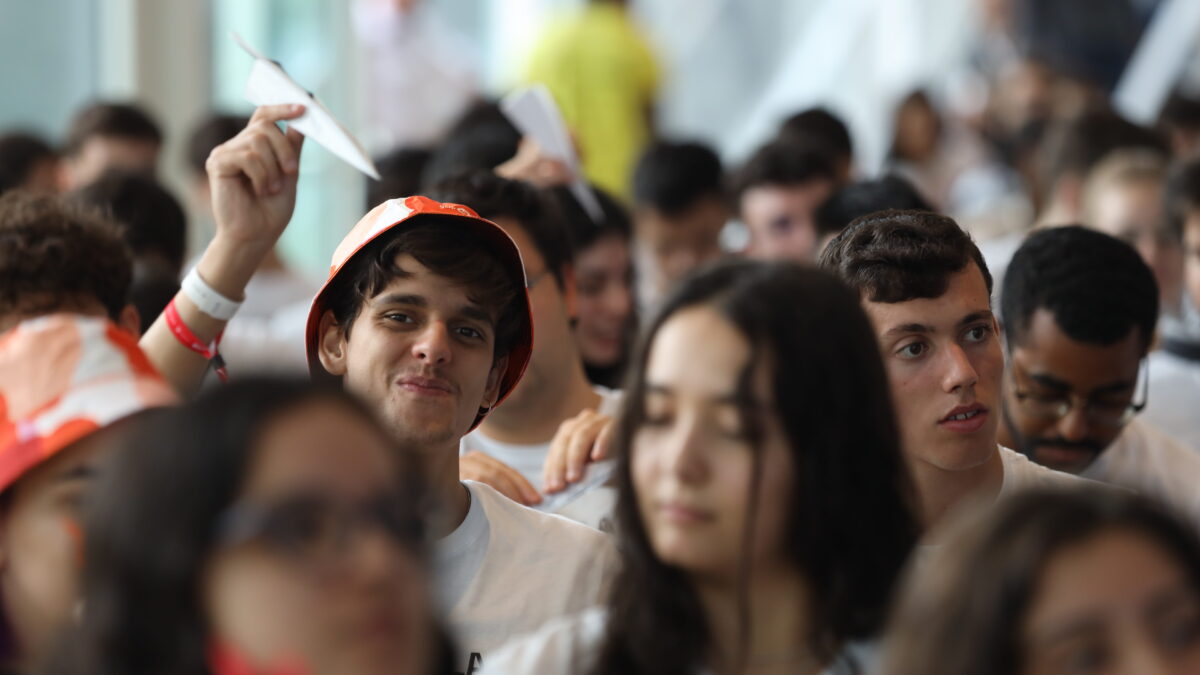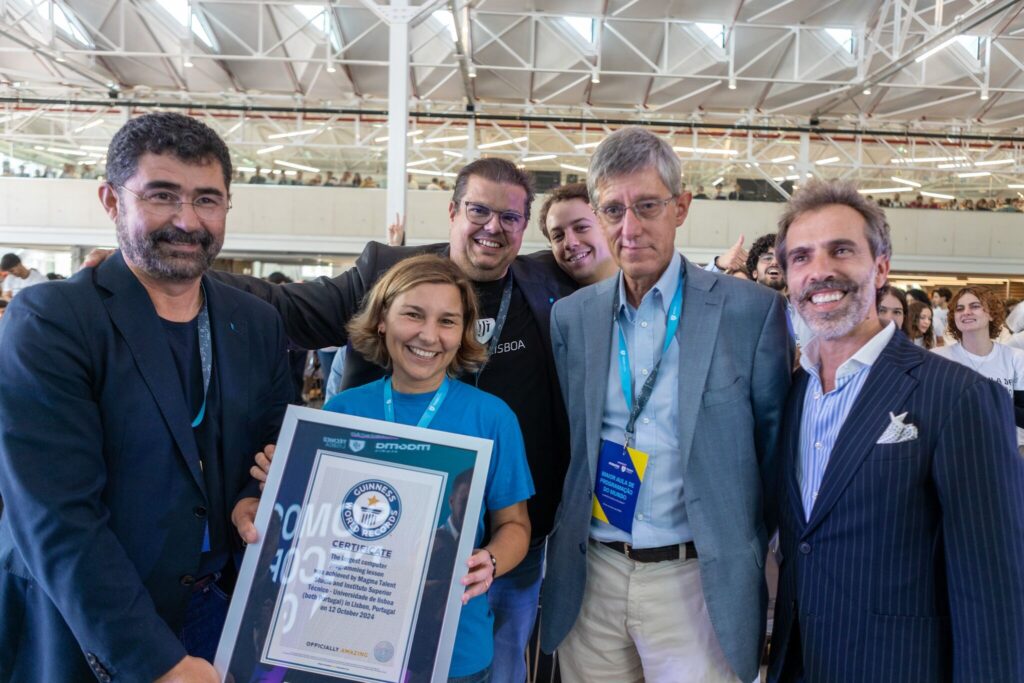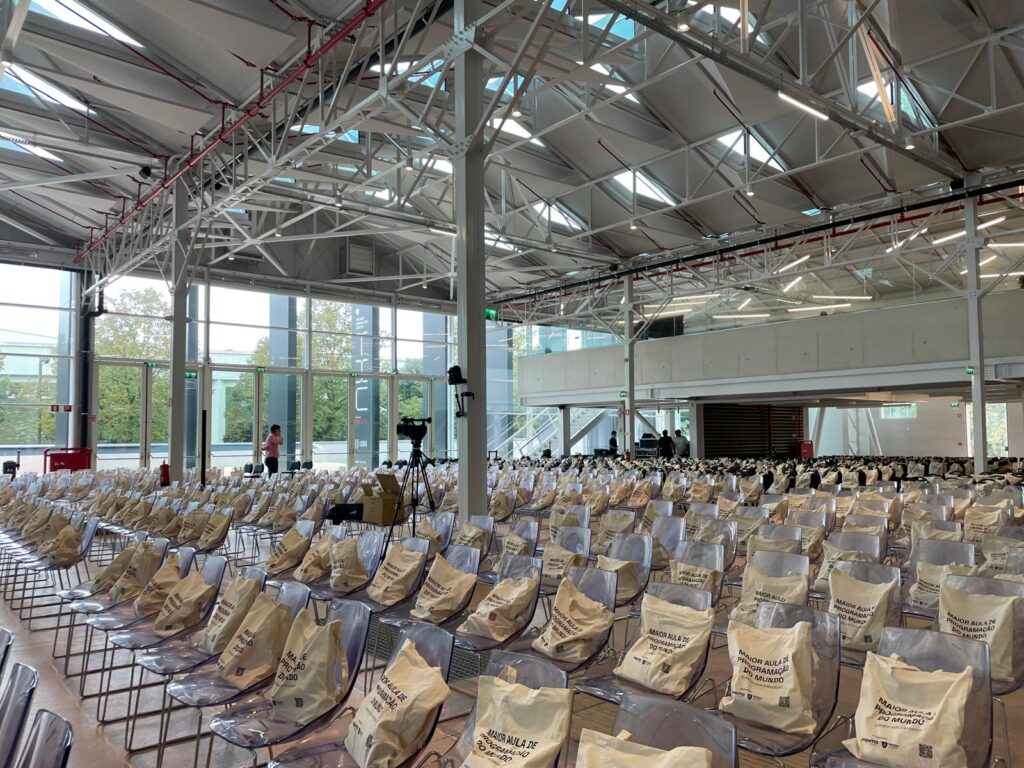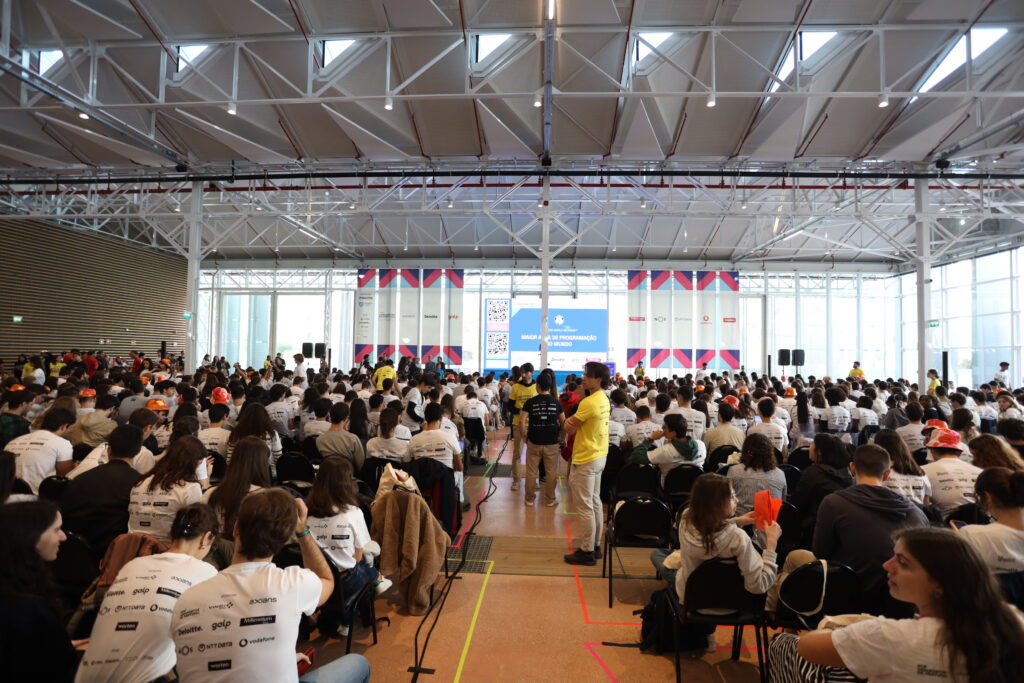
How to achieve a Guinness World Record: the backstage of the largest programming lesson
A line spiralling around the building of the Técnico Innovation Center (TIC), at eight in the morning of an otherwise lazy Saturday, was a good hint that we were about to experience something we had never seen before. Something worthy of the Guinness World Records.
The promise was to set the record for the largest computer programming lesson in a single venue. A goal Instituto Superior Técnico, together with Magma Studio, was determined to achieve.
Being a PhD student in Computer Science it was definitely not the opportunity to learn about Phython that led Pedro Orvalho, 27, and his colleagues to get up earlier last October 13 and attend the meeting. “I was curious about how the class would be managed and, of course, also about the Guinness Record”, admits the researcher at INESC-ID, in Automated Reasoning and Software Reliability. When Pedro finally entered the venue, there were no more chairs nor gift bags. Certainly, the organizers didn’t expect more than the registered participants to show up. But they did!
Three teachers were responsible for the 90-minute class: INESC-ID President, Inês Lynce, and INESC President, Arlindo Oliveira, both professors at Técnico, and Rodrigo Girão Serrão, a former student at IST.
For Inês, the challenge was to plan a lesson for such a large and diverse audience. “It couldn’t be a class like the ones I teach at Técnico”, she admits. So that is why she came up with the idea of explaining the notion of an algorithm using something we have all done at least once in our lives: making a paper plane. In the gift bags, the participants could find sheets of paper in different colours and by following the instructions provided by Inês the planes came out of their hands (but they were not allowed to test their aerodynamical properties!). Rodrigo used the example of the Sudoku game, to explain the notion of programming and Arlindo brought the Game of Life and the classical book Os Maias, by Eça de Queiroz, to demonstrate a language model previously trained on the masterpiece of Portuguese literature.
The operations did not run smoothly all the time. “The access points were insufficient, and the mobile internet couldn’t handle it, resulting in a slow connection to OpenAI’s language model, which was used in the second example”, tells Arlindo Oliveira. A similar problem affected the remote control to operate the slides. “This caused the presentation to freeze more than once, putting me in a difficult position”, he regrets, admitting that “these two factors (and the sound delay in such a large room) were due to the scale of the event, and it was hard to anticipate, as classes are typically not held in such a large space.” After all, it was a first!
Despite the setbacks, the event was a huge success. The Guinness World Record Adjudicator, Paulina Sapinska was checking during the lesson to ensure that all the attendees were following the class and not checking social networks, for example. After the count, the record was set: There were 1,668 participants at the TIC (the previous record had set 724 participants in Dallas, EUA, in 2016).
Besides this, Inês Lynce highlights the festive atmosphere, the number of girls present and the general enthusiasm regarding programming. As stated by the President of Técnico, Rogério Colaço, a true “celebration of young talent.”
Text by Sara Sá, Science Writer | Communications and Outreach Office, INESC-ID / © 2024 INESC-ID
Images | © Instituto Superior Técnico and INESC-ID



